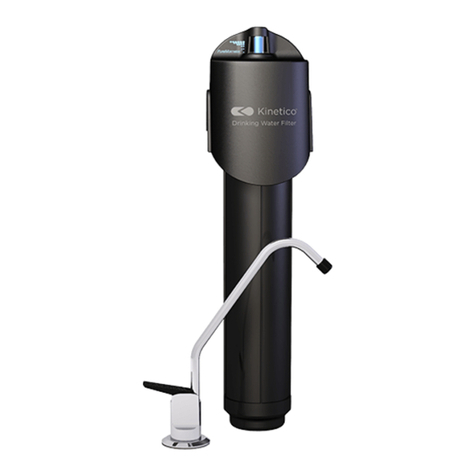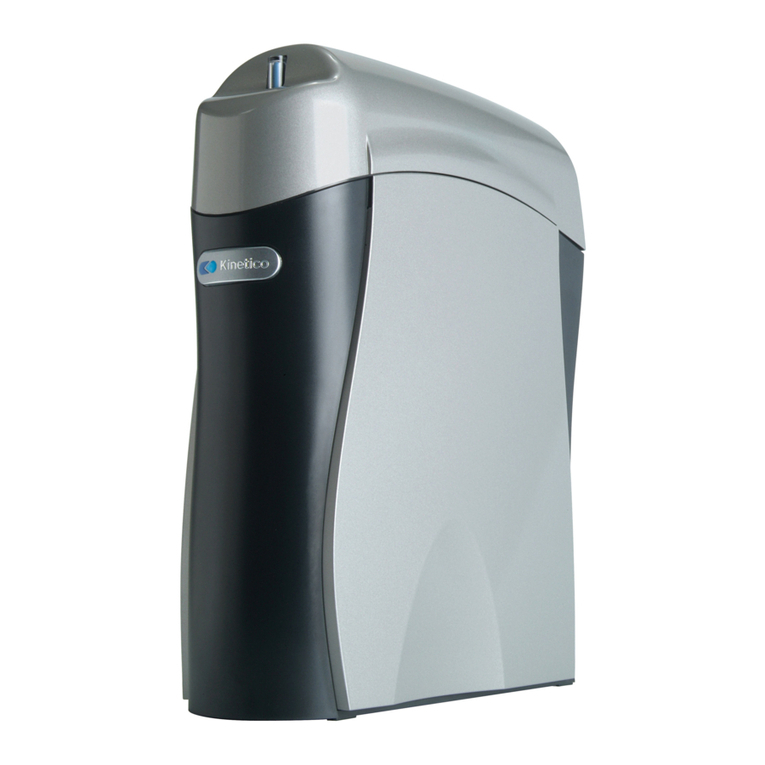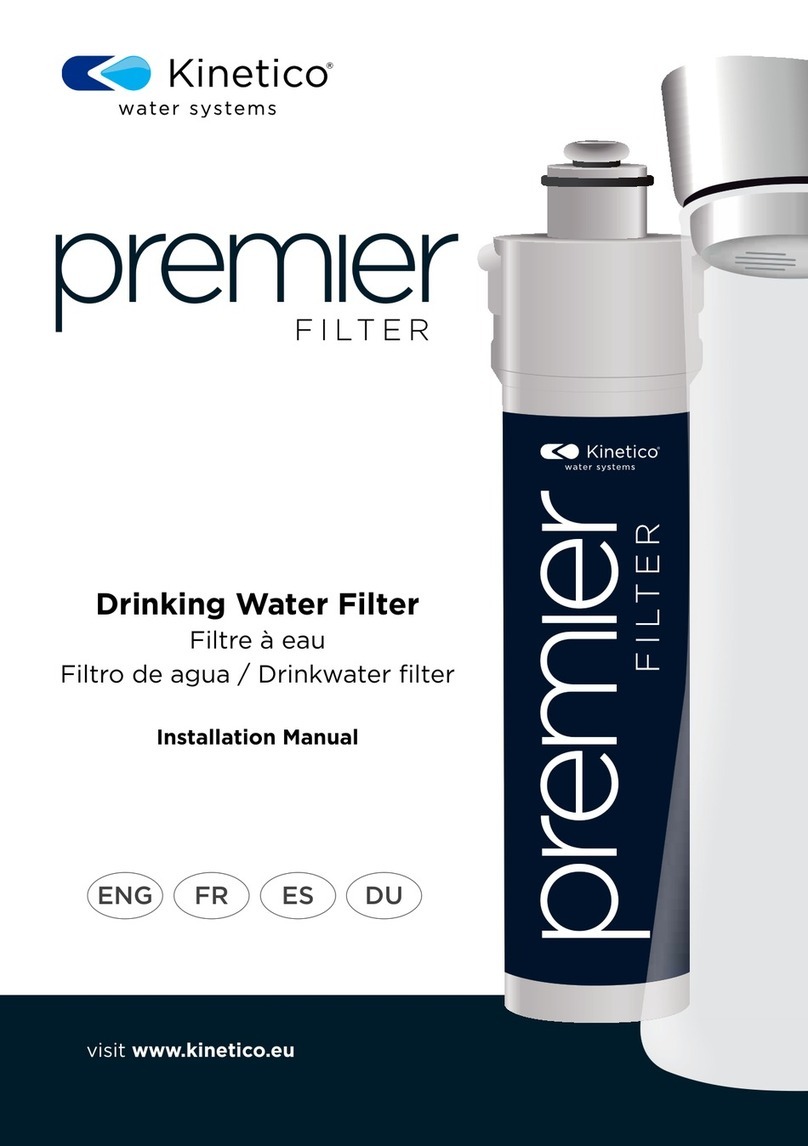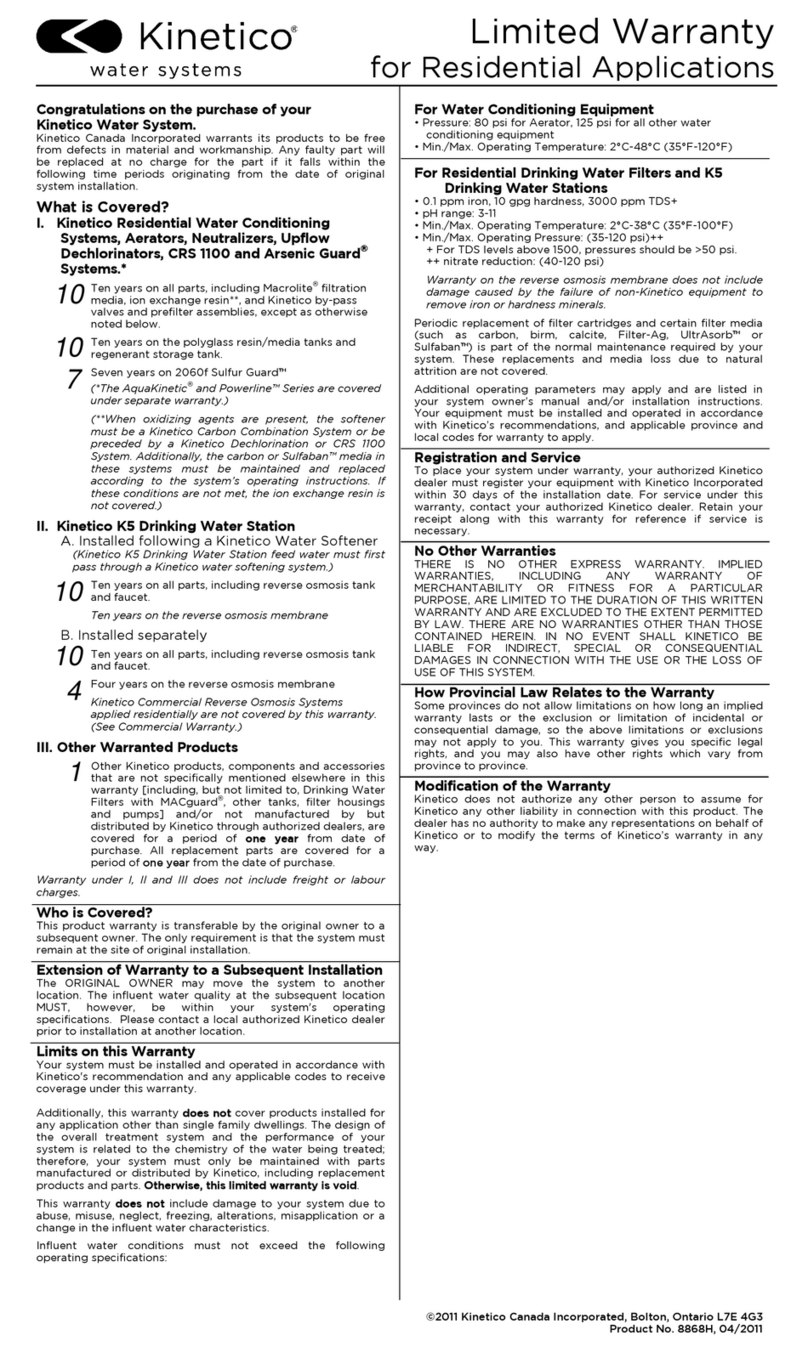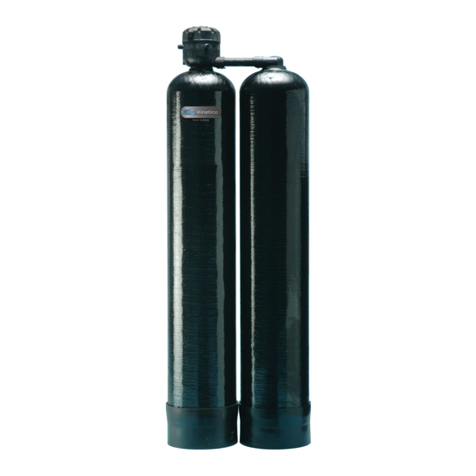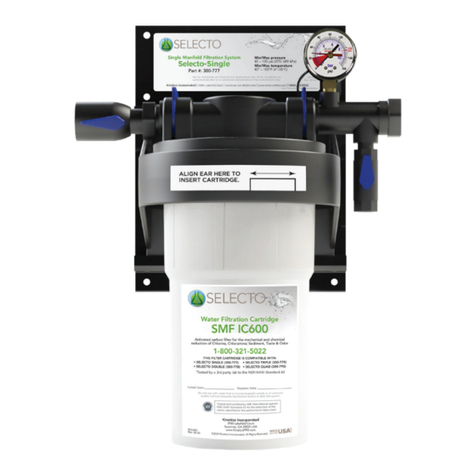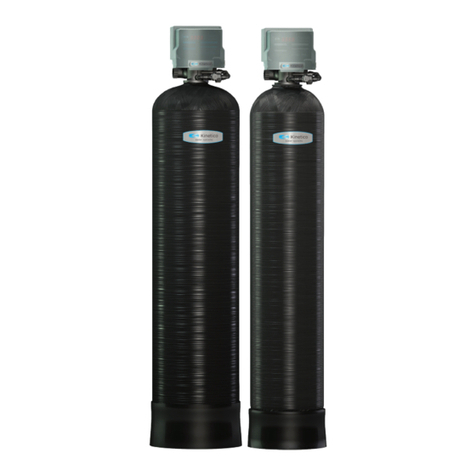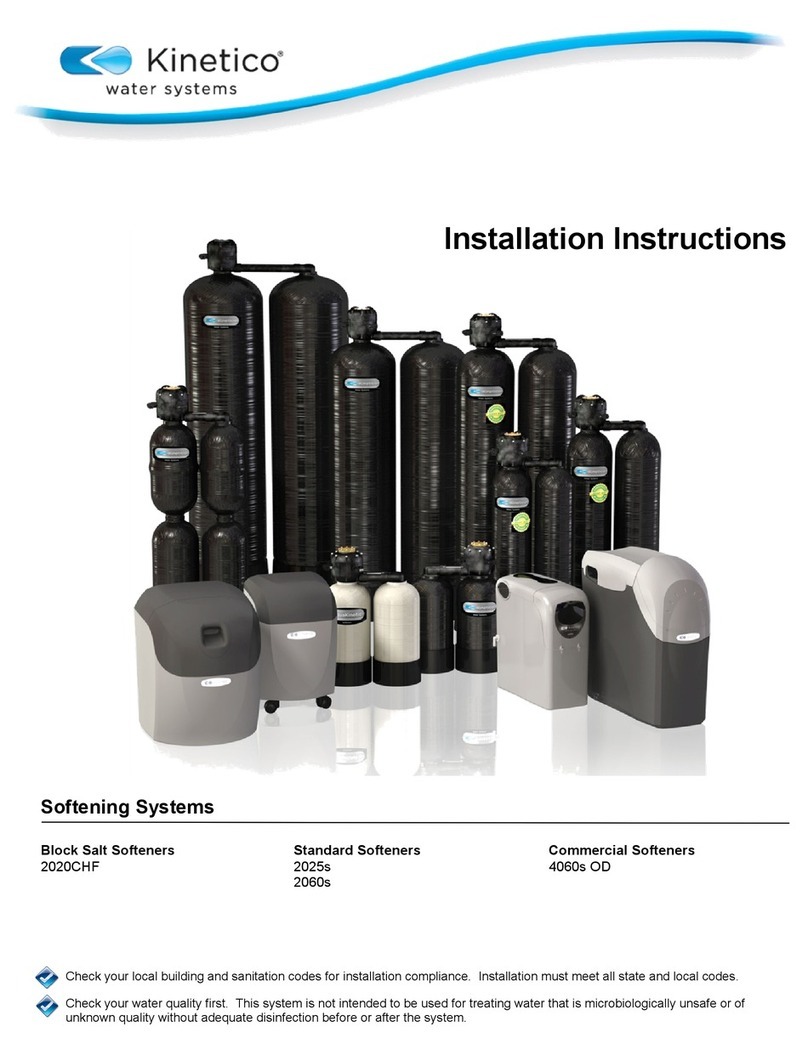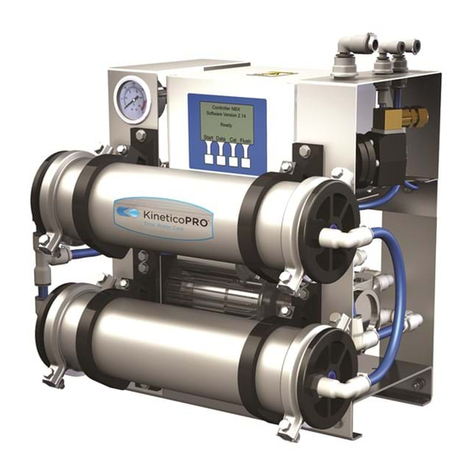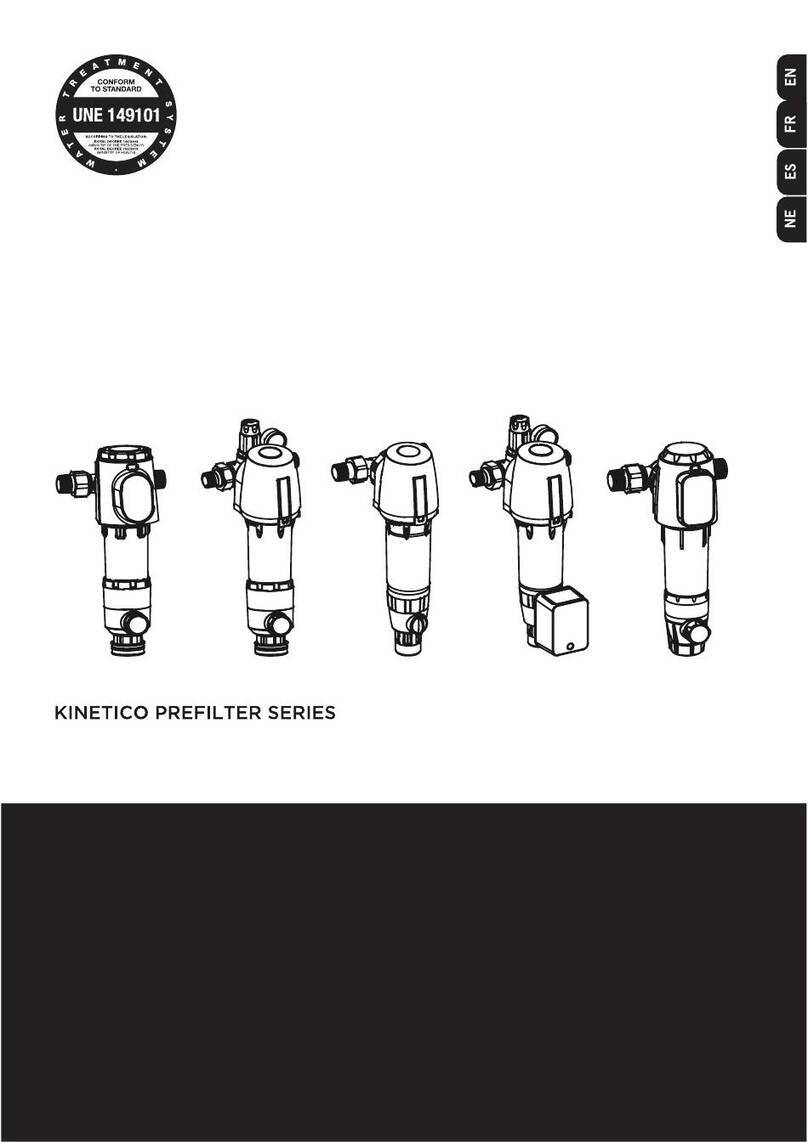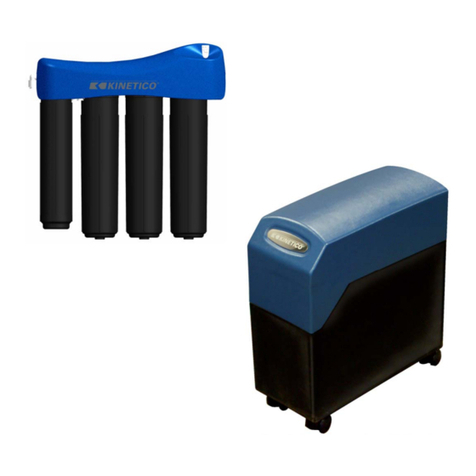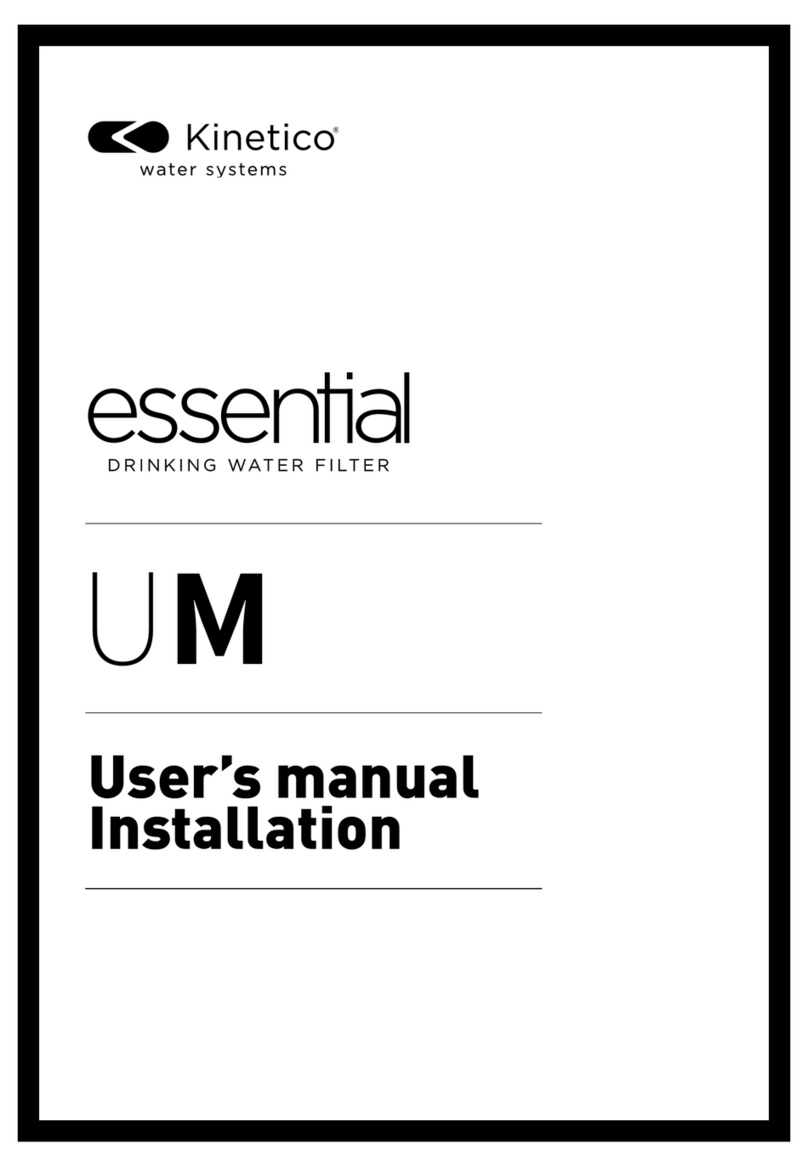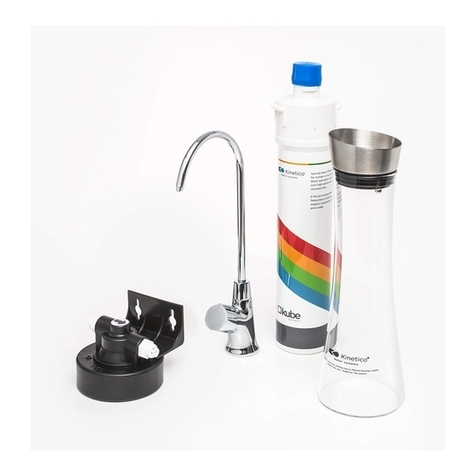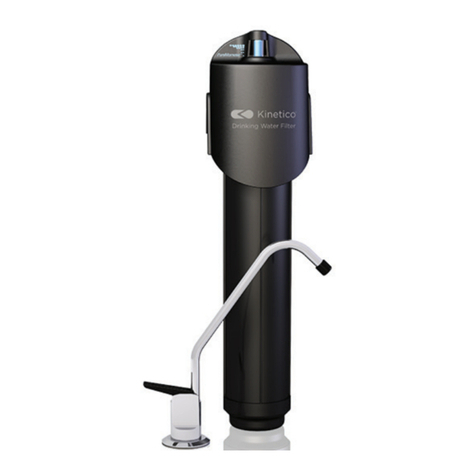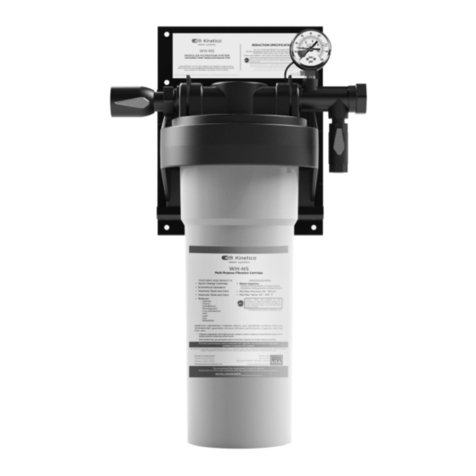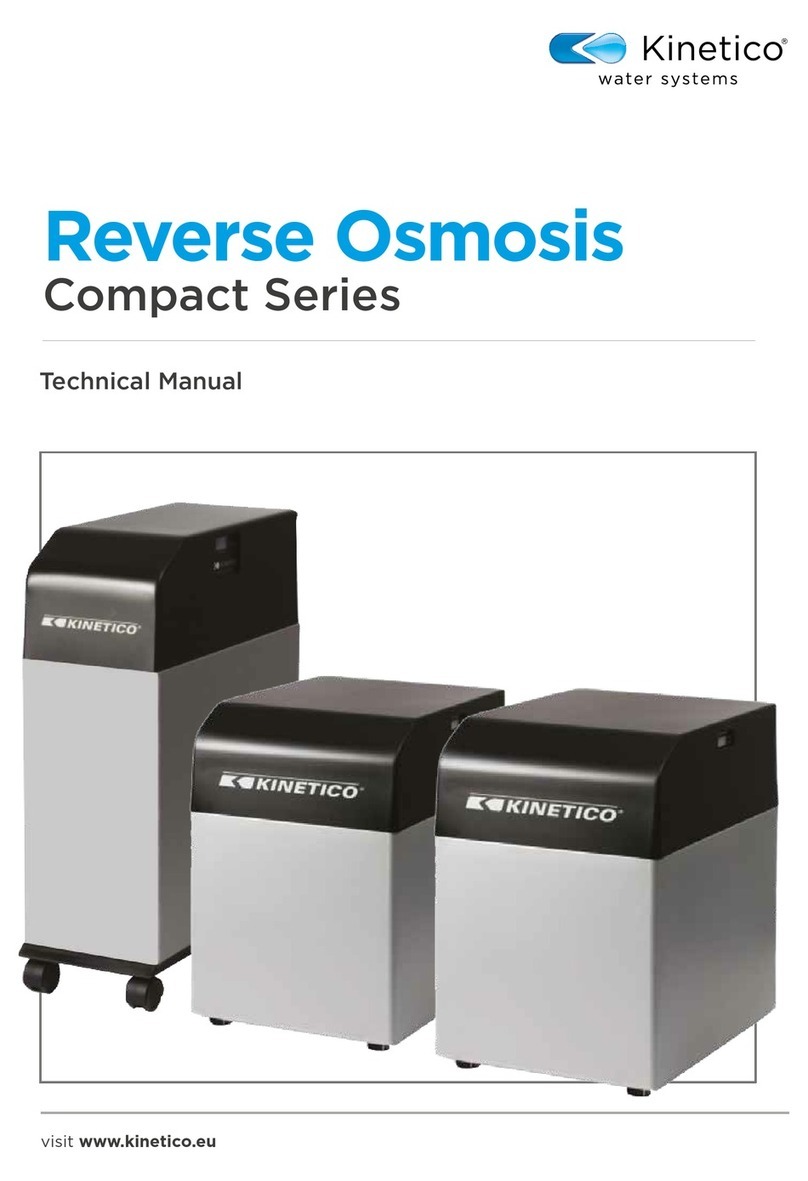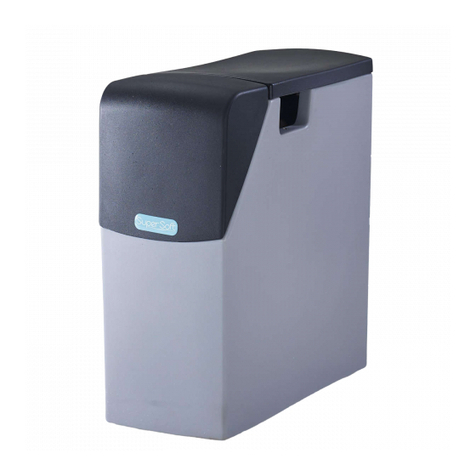
5
1. INTRODUCTION
Congratulations. You have purchased an excellent piece
of equipment for domestic water treatment.
This unit will help you improve the features of your
water.
2. WHAT IS OSMOSIS?
Natural or direct osmosis is the most common in natu-
re, since semi-permeable membranes are part of the
vast majority of organisms (for example, plant roots, or-
gans of our own body, cell membranes, etc...)
When two solutions of different concentration of salts
are separated by a semi-permeable membrane, a flow
of water naturally occurs. Water from the solution of
lower concentration to the solution of higher concen-
tration. This flow continues until the concentrations on
both sides of the membrane are equal.
When it comes to investing this process and achieve a
flow of water with a lower concentration of salts from
one with a higher concentration, a sufficient pressure
of the higher concentration water must be exerted on
the membrane, to overcome the tendency and natural
flow of the system. This process is what we call Inver-
se osmosis. Currently, reverse osmosis is one of the
best methods to improve the characteristics of water,
through a physical system (without the use of chemical
products).
The water to be purified exerts pressure on the se-
mi-permeable membrane, so that part of it will manage
to cross the pores of the membrane (osmotized water),
while the rest of the water (rejected or with a high con-
centration of salts) will be diverted towards the drain
(Fig. 1).
3. ADVANCE WARNINGS
ATTENTION: Read carefully the warnings des-
cribed in the corresponding section
of the Technical Manual.
ATTENTION: These equipments ARE NOT POTA-
BILIZ res of water In the event that the water to
be treated comes from a public supply (and therefore
complies with current legislation), these equipments
will substantially improve water quality
Water treatment equipment needs periodic mainte-
nance carried out by qualified technical personnel, in
order to guarantee the quality of the water produced
and supplied.
3.1. USE OF THE EQUIPMENT
• When you are going to be away for more than a week,
close the water inlet tap to the equipment, empty it
and disconnect it from the power supply (PUMP model).
When you return, connect the power supply to it, open
the inlet valve and the tap. Let the water run out for at
least 5 minutes before consuming water.
ATTENTION: After a prolonged period (more than
a month) in which the equipment has been found
without working or producing water, contact your dis-
tributor in order to carry out a sanitization.
Properties and maintenance.
• Extract full jugs or bottles and avoid the occasional
extraction of glasses to improve the performance of the
equipment.
ATTENTION: Special attention must be paid to the
cleaning and hygiene of the osmosis faucet, on a
regular basis and especially when carrying out perio-
dic maintenance and hygiene. To do this, use the sani-
tizing spray and single-use disposable kitchen paper.
In no case should a cloth be used to dry hands or tap.
· This appliance can be used by children aged from 8
years and above and persons with reduced physical,
sensory or mental capabilities or lack of experience and
knowledge if they have been given supervision or ins-
truction about using the appliance safely and unders-
tand the hazards involved. Children must not play with
the appliance. Cleaning and user maintenance should
not be performed by children without supervision.
3.2. RECOMMENDATIONS FOR THE CORRECT USE OF
THEDESALINATED WATER
•If you wish to supply osmotized water to any other
point of consumption (such as a refrigerator with an
ice cube dispenser, another tap, etc...), the channeling
should not be made with a metal tube, since this would
give the water a bad taste. Always use plastic tubing.
ATTENTION: The water provided by domestic os-
mosis equipment is of LOW MINERALIZATION. The
mineral salts that the body needs
are mainly provided by food, especially dairy products
and to a lesser extent by drinking water.
Osmosis membrane
Membrane
Pollution Water inlet
Bacteria Chemical Membrane Pressure Rejected
Compounds Mineral Flow Membrane
Salts Membrane
Water Flow of purified water
Purified water
Entry Pressur
Rejection: water with salts
and retained elements
